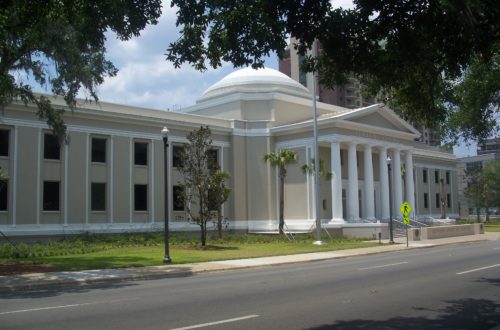Our society does an exquisite job of pointing the finger at others when we should be pointing the finger at ourselves. In complex issues like racial inequality, we fixate and place full blame on one area of the problem without providing adequate solutions on the matter at hand. In our most recent endeavor, we have chosen to obsess over the removal of Thomas Jefferson statues nationwide because he was a slave owner who “upon his death, … did not free the people he enslaved, other than those in the Hemings family.”
Though his personal life was far from acceptable, I don’t believe it is grounds for removing every one of his statues and with it, a piece of our nation’s history. Rather, instead of impulsively and violently advocating for the removal of Jefferson statues, we should first take full consideration of the figure’s historical context as well as other possible solutions to rectify the controversy.
Through the historical looking-glass, there were two sides to Thomas Jefferson: Jefferson, the slave owner, and Jefferson, the founding father. As a slave owner, it is estimated that Jefferson enslaved over 600 people — 400 in Monticello and 200 in the rest of his properties. Unlike his predecessor, George Washington, Jefferson also refused to release his slaves upon his death and instead sold them to pay off his debt.
The controversy here is not whether being a slave owner is erroneous — I think we all know the answer to that. Instead, the issue is that protestors are once again fixating on this unacceptable behavior from Jefferson’s personal life while at the same time naively ignoring the nation-defining ideals he stood for.
As a founding father, Jefferson proclaimed a central ideal enumerated in the Declaration of Independence “that all men are created equal, that they are endowed by their creator with certain unalienable rights, that among those are life, liberty and the pursuit of happiness.” Jefferson and our nation’s execution of these principles have been far from perfect. Yet, U.S. citizens including Black civil right activist Martin Luther King Jr. continue to use this principle as a promise made in our nation’s past, which must continue to be centralized in our nation’s future.
Another defining ideal that Jefferson stood for was religious liberty. So much so, that many of his statues are intended to serve as a symbol of religious freedom. He especially advocated for and helped with the advancement of legislation such as the 1786 Virginia Act for Establishing Religious Freedom — an act emphasizing that “all men shall be free to profess, and … maintain their [religious] opinions.” Considering this historical context, if Jefferson’s statues go down, overarching ideals of religious freedom, life, liberty and equality will go down with it.
To avoid this complete expungement of history and values that currently characterize our nation, we must avert from this narrow-minded proposition of removing Jefferson’s statues. Let’s stop using a man who lived over 200 years ago as an excuse for our current problems and, instead, put our energy towards finding a solution to the real dilemma at hand: portraying Jefferson as both a founding father and a slave owner.
As Dr. Manisha Sinha, a historian at the University of Connecticut, explained in The Washington Post, “We can commemorate certain people for their achievements at the same time being critical of certain actions they took [that] we don’t approve of today.”
To achieve this balance, we could change the inscriptions on Thomas Jefferson’s statues to more holistically reflect him.
Monticello — Thomas Jefferson’s home which has since been a UNESCO World Heritage Site, museum and research institute — is a perfect example of this solution in practice. With exhibits like the Life of Sally Hemings, Getting Word Oral History Project and Thomas Jefferson’s World Film, Monticello epitomizes the necessary balance between depicting Jefferson’s achievements as well as his questionable actions.
Whether it be establishing museums like Monticello or inscriptions at the foot of Thomas Jefferson statues, these solutions allow citizens to both view and comprehend who he was and what he did for our country in its entirety.
These efforts to increase society’s knowledge of Thomas Jefferson shouldn’t stop at the feet of inscriptions or in museums, but rather, continue into classrooms. This isn’t to say that there should be a Thomas Jefferson statue in every classroom because that would be rather excessive. Alternatively, we could create and implement initiatives similar to the 1619 Project in that they would bring to light a different perspective on slavery, race, inequality and the significant impact that African Americans have on our nation beginning in the Jefferson era.
The effective implementation of solutions such as re-writing inscriptions, exhibiting interactive displays and even creating innovative school curriculum initiatives, make the notion of removing Jefferson statues sound even more absurd than it already was. If we choose to ignore these solutions in front of us and instead continue to fixate on a trivial debate, then the Thomas Jefferson statue will likely cave under pressure, and along with it, our nation’s history.
These issues continue to persist in Florida as well-intentioned protests clash with those who hope to preserve history, but the solution can prioritize the goals of all.
Check out other recent articles from the Florida Political Review here.
Featured image: Thomas Jefferson Statue at the University of Virginia. (Unmodified photo by Bestbudbrian used under a Creative Commons license. http://bit.ly/3WFFiFQ)





